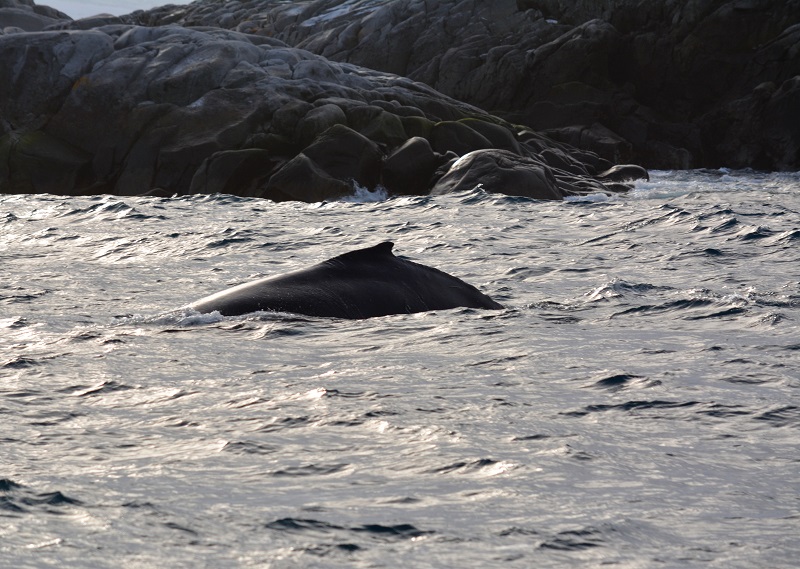
You’re out in a zodiac, the air is crisp, the ocean is choppy, the bow of the boat comes down off of a rolling wave to reveal the dorsal fin of a humpback whale in the distance. Trailing close behind is a smaller dorsal fin. You watch from a distance as mother and calf take turns surfacing for air – gracefully soaring along the shorelines of several islands on their way out to sea. Today, you are a whaler!
Here on station, we informally refer to groups by a name associated with the work they do: the bug researchers are “the buggers,” the bird researchers are “the birders,” our group is referred to as “the divers,” and so on.
Each of these groups does some seriously fascinating work out here and having the opportunity to be a part of that is an absolute dream for someone like me; so, when Chuck offered to let me trade jobs with a volunteer dive tender for the day to go out with “the whalers,” I was in marine biology heaven!
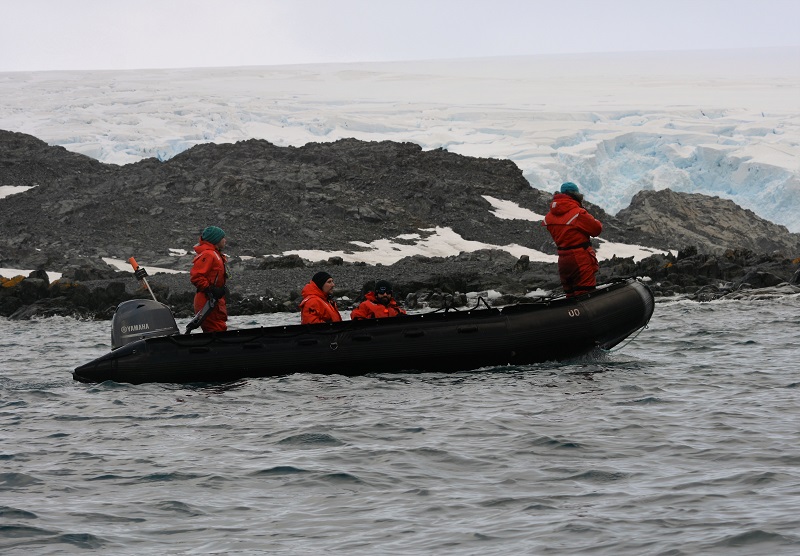
The whalers, Ross Nichols and Greg Larsen, are both graduate students working on a project in collaboration between labs at the University of California at Santa Cruz and the Duke University Marine Lab. Their part of the multi-disciplinary Long Term Ecological Project (LTER, for short) examines the feeding behavior and the overall ecological role of humpback and minke whales in the area surrounding Palmer Station.
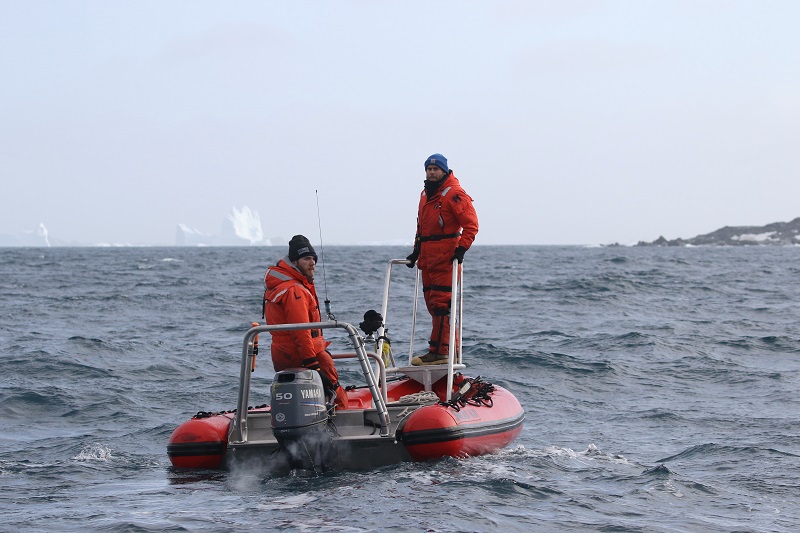
For our adventure, we took two zodiac boats out (one with the real whalers, Ross and Greg and one with honorary whalers for the day). With two zodiacs and a few other modifications, we were able to venture out of the regular boating area into new territory (for me at least) of the extended boating area. You’ll find a map and general description of the boating area in CJ’s “Bubble-watching” post.
My adventure buddies for the day were Frank (a phytoplankton researcher), Frank Hegyi (a videographer here with the fish researchers), and Oksana (a visiting scientist from the nearby Ukrainian station, Vernadsky).
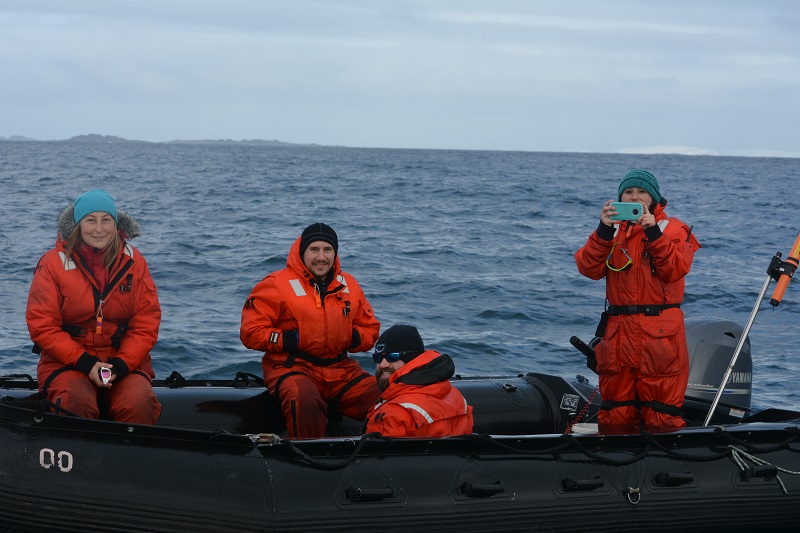
Within the first 10 minutes of our journey, we were fortunate enough to see the dorsal fin of a minke whale, a beautiful species with a pointed head and sharply-curved dorsal fin. We tried to follow the whale but were not successful as minkes are notorious for surfacing for a short period and then traveling long distances underwater.
From there we headed south, cruising around the islands there until Greg and Ross spotted a humpback in the distance. We motored over to the area and waited at a distance until she resurfaced about 8 minutes later. We were all pretty excited at this point but were completely unprepared for the added bonus of the young calf who surfaced shortly after its mother.
We were able to follow along and observe the pair for about a half-hour as they made their way along the border of the southern islands north towards open ocean. They moved effortlessly through the choppy water, alternating between surfacing at the same time and taking turns di ving and breathing. Once they reached open water, we said goodbye to our new friends and headed back to the protection of slightly calmer water near the islands.
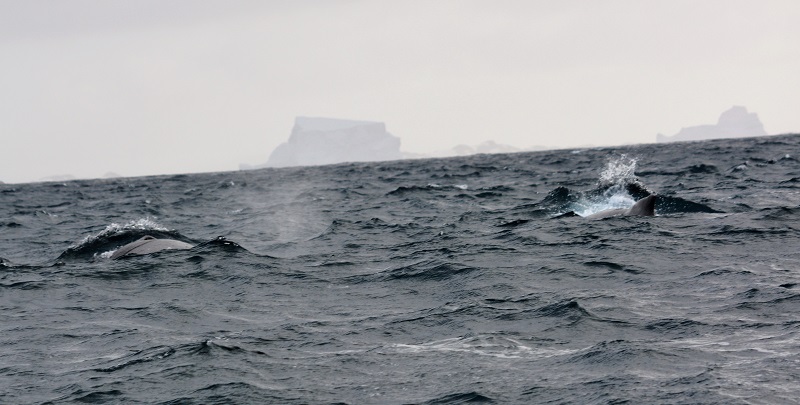
Although we did not spot any more whales that day, the ones we did see will forever be a wonderful memory of an unforgettable experience. I was so fortunate to get the chance to go whale watching for a day in Antarctica and hope that this post does a good job of sharing some of that with anyone who reads it.
After being a whaler for a day, it is clear to me how a number of people have dedicated their lives and careers to studying such fascinating creatures in such a remote and beautiful place.
NOTE: All photos for this blog were from Greg Larsen, Ross Nichols, and Oksana Savenko.